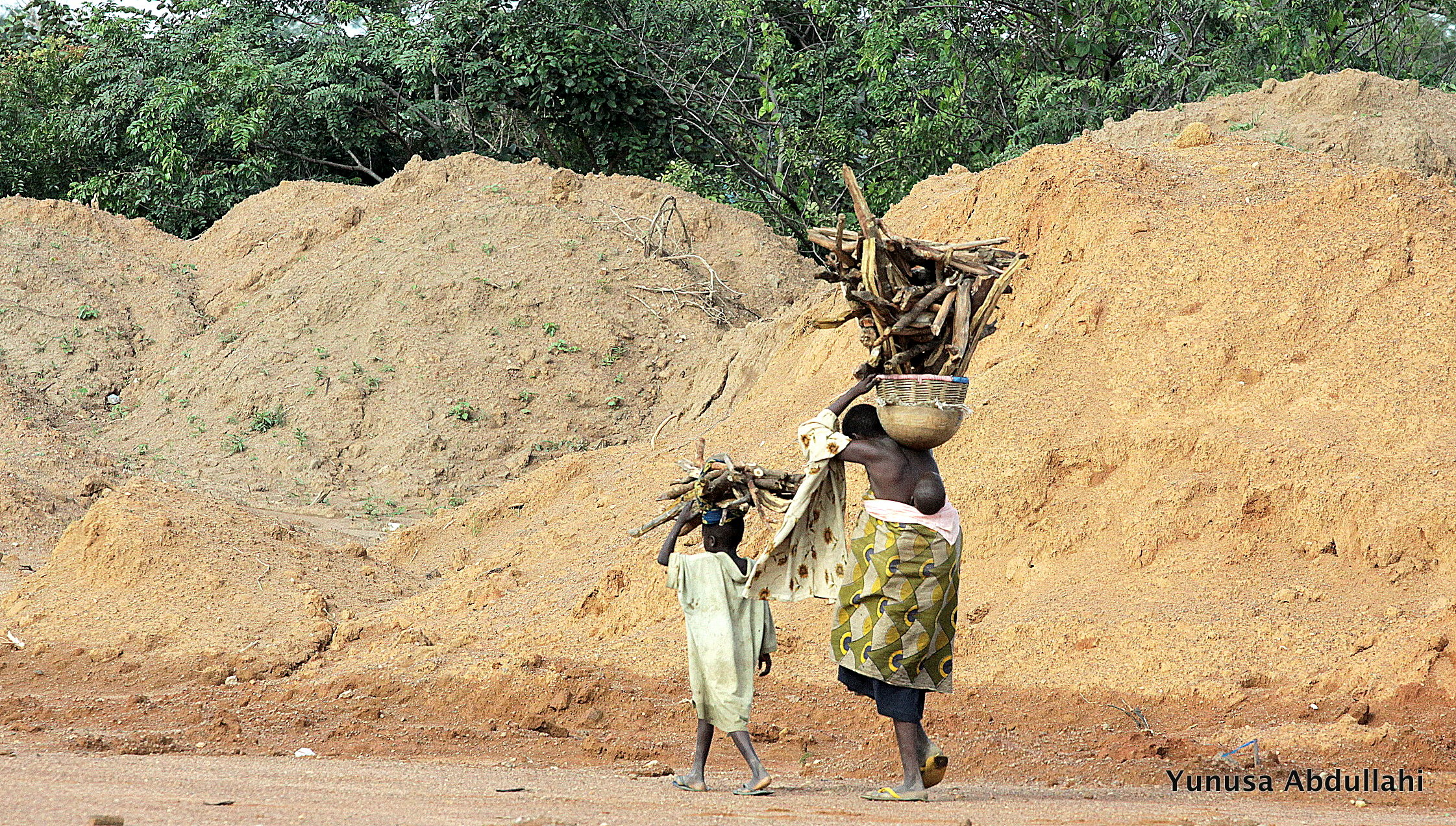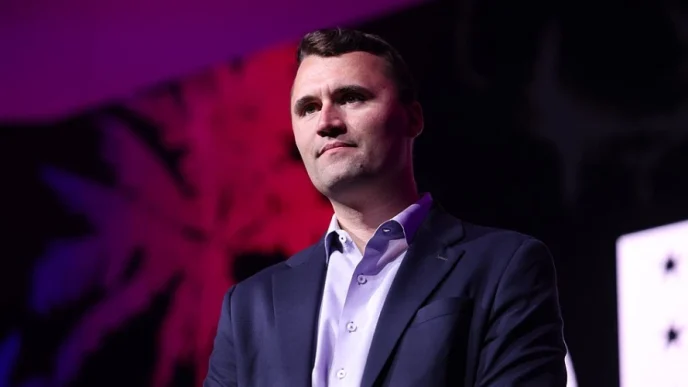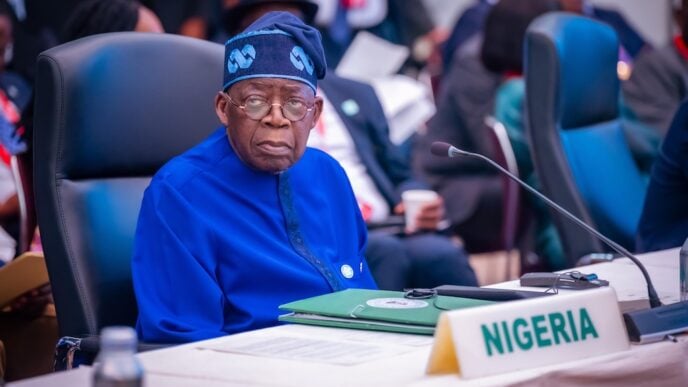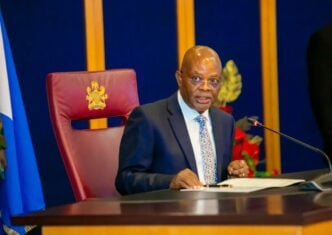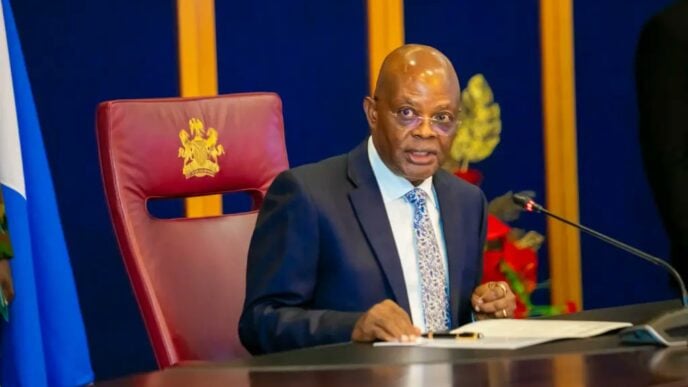Poverty, in its many guises, remains one of the most formidable barriers to sustainable development, human dignity, and social cohesion. The persistence of poverty in the twenty-first century, despite significant global advances in technology, medicine, and productivity, is a testament to its complex, multifaceted nature. Nowhere is this more evident than in sub-Saharan Africa, where Nigeria—Africa’s most populous country—wrestles with the Herculean task of uplifting millions from the morass of deprivation.
While poverty has traditionally been measured in purely economic terms, modern development scholarship recognises that poverty transcends monetary insufficiency. This comprehensive treatise explores the centrality of infrastructure investment in eradicating multidimensional poverty, with a particular emphasis on Nigeria. The discourse will define multidimensional poverty, examine the transformative power of infrastructure, and provide empirical insights and projections about Nigeria’s journey. It will close by strongly advocating for more robust and frequent data collection on multidimensional poverty to inform and sharpen policy interventions.
Defining Multidimensional Poverty
Poverty, in its classical conceptualization, is frequently framed around income or consumption thresholds. However, such unidimensional paradigms have been proven inadequate in capturing the full spectrum of human deprivation. Multidimensional poverty, as articulated most notably by the Oxford Poverty and Human Development Initiative (OPHI) and adopted by the United Nations Development Programme (UNDP), recognizes that poverty is not merely the absence of income, but the deprivation of various capabilities and opportunities essential for living a dignified life.
Advertisement
Multidimensional poverty is an analytical construct that encompasses several domains of deprivation, most commonly:
- Health (nutrition, child mortality, access to healthcare)
- Education (years of schooling, school attendance)
- Standard of living (electricity, sanitation, safe drinking water, flooring, cooking fuel, and asset ownership)
- Work (unemployment) and susceptibility to shock
The Multidimensional Poverty Index (MPI) quantifies the intensity and prevalence of such deprivations, offering a nuanced portrait of poverty that goes beyond income-based measures.
This reconceptualisation is vital, for it enables policymakers, development practitioners, and researchers to identify, target, and ameliorate the specific deprivations that afflict individuals and communities, rather than relying solely on crude economic aggregates.
Advertisement
The Nexus between Infrastructure and Multidimensional Poverty
Infrastructure forms the backbone of modern civilisation. The term encompasses physical structures and systems fundamental to the functioning of society, including transportation networks (roads, bridges, railways, airports), energy generation and distribution (power grids, renewable energy facilities), water and sanitation systems, healthcare infrastructure, educational facilities, agricultural infrastructure like dams and irrigation, and telecommunications.
When infrastructure is robust, accessible, and well-maintained, it acts as a catalyst for economic growth, social mobility, and enhanced human capabilities. Conversely, infrastructural deficits exacerbate multidimensional poverty by limiting access to healthcare, education, employment opportunities, and markets, thus perpetuating cycles of deprivation.
Let us explore the mechanisms through which investment in infrastructure acts as a powerful lever for the eradication of multidimensional poverty:
Advertisement
- Access to Health Services: The construction and equipping of health centres and hospitals, coupled with improved transportation networks, enable communities – especially in rural and remote areas—to access essential health services. This reduces child mortality, combats preventable diseases, and improves overall well-being.
- Educational Opportunities: School buildings, reliable transportation, electricity for digital learning, and internet connectivity break down barriers to educational attainment. Better infrastructure means children can attend school safely, learn in conducive environments, and benefit from modern pedagogies, thus breaking the intergenerational cycle of poverty.
- Water and Sanitation: Safe water supply and proper sanitation facilities are direct determinants of health. Infrastructure investment in these areas drastically reduces the prevalence of waterborne diseases, improves nutritional outcomes, and enhances quality of life, particularly for women and children.
- Economic Empowerment: Roads, railways, and ports reduce transaction costs and open up markets, enabling smallholder farmers, artisans, and entrepreneurs to sell their goods and services. Electrification supports small and medium enterprises, while digital infrastructure opens up new frontiers in e-commerce, innovation, and remote work. In Nigeria, we have seen that many communities remained cut off from the mainland either by inclement terrains or huge bodies of water (Taraba/ Niger Delta). The provision of roads and bridges for such communities e.g Nembe-Brass Bridge(s), directly impacts reducing poverty among thousands of Nigerians because people can involve more in commerce, or even commute easily from work.
- Social Inclusion and Gender Equality: Infrastructure designed with inclusivity in mind (e.g., accessible public transport) empowers persons with disabilities and marginalised groups, and reduces the time burden on women and girls who often bear the brunt of infrastructural deficits.
In sum, investment in infrastructure is not merely an economic imperative; it is a moral and strategic necessity for the eradication of multidimensional poverty.
Infrastructure Investment in Nigeria: Trajectories and Impacts
Nigeria’s post-independence history has been characterised by alternating periods of infrastructural neglect and resurgence. In recent years, there has been a marked reawakening of interest in infrastructure as a strategic lever for national development, particularly given the country’s demographic explosion.
Overview of Nigeria’s Multidimensional Poverty
Advertisement
Nigeria is home to over 200 million people, making it Africa’s most populous nation. According to the National Bureau of Statistics (NBS) and the latest multidimensional poverty reports, approximately 63% of Nigerians—equivalent to about 133 million people—were classified as multidimensionally poor as of 2022.
The principal drivers of multidimensional poverty in Nigeria include limited access to health and education services, inadequate water and sanitation facilities, and unreliable power supply—each directly linked to infrastructural deficits.
Advertisement
Historical Trends in Infrastructure Investment
Nigeria’s infrastructure stock, as a percentage of GDP, has lagged behind global and continental averages, hovering between 20-30%, compared to 70% or more in advanced economies. Historically, underinvestment has been compounded by governance issues, insecurity, and rapid population growth.
Advertisement
Nevertheless, significant federal and state-led initiatives to boost infrastructure under the leadership of President Bola Ahmed Tinubu, including the great boost that is occasioned by much larger allocations going to state and local governments, have drawn criticisms from opposition parties who seem not to understand the imperative of infrastructure investment for a country such as ours. Consider these:
- Transport: Expansion and rehabilitation of the national road network (e.g., the Lagos-Ibadan Expressway, Second Niger Bridge, Badagry-Sokoto Highway, Lagos-Calabar Coastal Road, Nembe-Brass Road and Bridges etc), upgrading of airports, and partial modernisation of the railways (e.g., Abuja-Kaduna, Lagos-Ibadan rail, and the Lagos Urban Metro systems).
- Power: Efforts to increase electricity generation capacity (e.g., the Azura Power Project), rural electrification schemes, and burgeoning investments in renewable energy by both government and private sector actors.
- Water and Sanitation: Projects aimed at expanding access to potable water (e.g., National Urban Water Sector Reform Project) and improved sanitation facilities, particularly in urban slums and rural communities.
- Health and Education: Construction and renovation of primary health centres and schools, alongside programs to supply medical equipment and digital learning infrastructure.
- ICT: Expansion of broadband internet, national backbone fibre optic networks, and mobile telephony, achieving penetration rates above 50% in some areas.
Empirical Evidence: Infrastructure’s Impact on Multidimensional Poverty
Advertisement
Rigorous studies and data from Nigeria demonstrate a positive correlation between infrastructure investment and reductions in multidimensional poverty. Several key findings are germane:
- Health Outcomes: Local government areas (LGAs) that have benefitted from primary healthcare centre construction report reductions in child and maternal mortality, bolstered immunisation rates, and improved nutrition indicators. Over 4,000 PHCs have been rehabilitated in just over 2 years.
- Education: States with consistent school building and renovation programs have seen higher school enrolment and retention, as well as improved literacy rates.
- Water and Sanitation: Access to improved water sources has resulted in lower incidence of diarrheal diseases and better school attendance, particularly among girls.
- Electrification: Communities newly connected to the grid or equipped with solar mini-grids report increased household incomes, higher productivity for businesses, and reduced indoor air pollution.
- Transport: Improved roads facilitate market access, reduce travel times, and enable rural producers to command higher prices for their goods, directly impacting household welfare.
For instance, the Abuja-Kaduna railway has not only eased passenger travel but also catalysed commerce and investment along its corridor. Similarly, the expansion of mobile networks has enabled millions of Nigerians to participate in the digital economy, access banking services, and receive health information. Challenges abound; we are yet to get near any measure of adequacy, but consistency is key.
Case Study: The Transformative Impact of Rural Electrification
The Rural Electrification Agency’s (REA) initiatives have brought off-grid power to hundreds of communities. Evaluation surveys reveal that such interventions reduce the time spent collecting firewood, increase school study hours, and support the establishment of clinics and small businesses. In some states, the proportion of households classified as multidimensionally poor has dropped by up to 10 percentage points following the introduction of reliable electricity.
Quantifying the Impact: How Many Nigerians Could Be Lifted from Multidimensional Poverty?
Estimating the number of Nigerians who could be extricated from multidimensional poverty through sustained infrastructure investment requires an analytical approach, leveraging both empirical evidence and informed projections.
Let us consider the following model:
- According to the 2022 MPI report, 133 million Nigerians (63% of the population) are multidimensionally poor. This data has not been updated but is however deployed against the government as a blunt instrument by people who are not interested in improvement but in politics and power.
- Studies indicate that comprehensive infrastructure investments—if consistently implemented at Federal, State, and Local Government levels—could reduce multidimensional poverty by up to 3-4 percentage points annually (World Bank, African Development Bank, and national evaluations).
Hypothetical Calculation:
- If Nigeria were to maintain an average annual reduction of 3.5 percentage points in multidimensional poverty over a decade, the cumulative reduction would be 35 percentage points.
- Applying this to the baseline (63%), multidimensional poverty could be reduced to 28% over ten years.
- Given Nigeria’s projected population of about 230 million and growing, this would mean about 65 million people remaining in multidimensional poverty in 2032 (or about 69 million by 2030, down from 133 million in 2022. This could also mean that the number (133 million) has already been reduced by between 10 and 15 million since June 2023 due to the keen focus on infrastructure building. The NBS should kindly update its 2022 report very urgently.
- Hence, over 68 million Nigerians could be lifted out of multidimensional poverty in one decade through a consistent, infrastructure-led strategy. It is about transforming the lives of our people, away from want, deprivation, mediocrity, stasis, and lack. Infrastructure not only improves the environment and helps Nigeria catch up with other great nations which have done the same in times past, it helps in building the minds of our people.
This projection, of course, assumes optimal coordination, financing, and implementation. Nonetheless, it powerfully underscores the transformative potential of infrastructure.
Conclusion
The eradication of multidimensional poverty is one of the defining challenges of our era – demanding not only moral resolve but also strategic dexterity and evidence-based action. Investment in infrastructure stands at the very heart of this crusade, acting as both the catalyst and the foundation for sustainable development. Some pundits have argued against the building of infrastructure from the angle of its susceptibility to corruption.
But what is more powerful is that infrastructure usually outlasts all of us. Nigerians still enjoy the huge infrastructure built with the oil windfalls of 1974 under the government of General Yakubu Gowon. In many states, the roads built by General Muhammadu Buhari in his days as chairman of the Petroleum Trust Fund still exist. Some of Nigeria’s iconic infrastructure – such as the Apapa Port, Murtala Muhammad or Aminu Kano Airport, our many Federal Universities and Polytechnics, our Third Mainland Bridge (longest in Africa until Egypt completed its October 6th Bridge), were constructed with vision even when many complained then that infrastructure does not matter, just as some believe today that the government should just share the money to poor people because ‘ebinpawa’.
Of course, a wise government knows how to balance issues with eyes firmly fixed on the future, and constructive criticism that focuses government at all levels on what is more critical to build is highly welcome.
Nigeria’s experience, therefore, offers powerful testimony to the catalytic role of infrastructure in transforming health, education, economic, and social outcomes. Empirical evidence abounds that roads, electricity, water, schools, and clinics are not mere physical assets; they are engines of human capability and dignity.
Yet, this journey cannot proceed in darkness. The call for data authorities (who are independent of government) to invest in more frequent, precise, and disaggregated data collection is not a technocratic afterthought—it is a sine qua non for progress. Only with such data can Nigeria start to redefine her fate. We cannot continue to outsource our hopes and ambitions to entities that have no stake in our positive trajectory. And we must ever sleep on those hopes and ambitions.
The challenge now lies in translating vision into action, strategy into reality, and potential into tangible progress. This is a clarion call to policymakers, civil society, the private sector, and the international community: invest in infrastructure; invest in data; invest in people.
Views expressed by contributors are strictly personal and not of TheCable.

